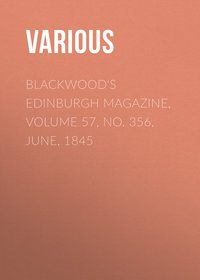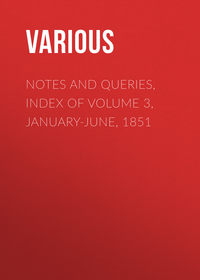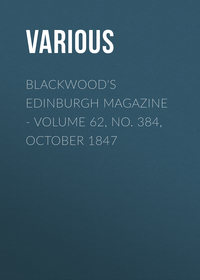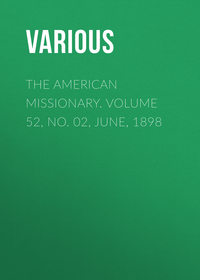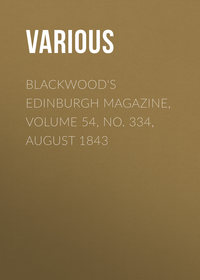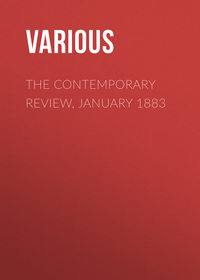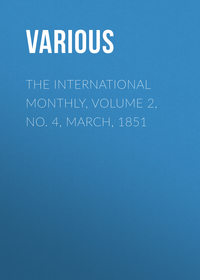 полная версия
полная версияDonahoe's Magazine, Volume 15, No. 4, April, 1886
The Christmas of 1862 in the camps of the Union Army on the left bank of the Rappahannock, confronting Fredericksburg, was rather wanting in good cheer, although so near the Potomac, and it was only until Gen. Hooker superseded Burnside in command of the Army of the Potomac, that rations of potatoes could be had to serve out to the half-famished troops. What a delightful supplement to a soldier's mess is even one good potato and a piece of onion, when for weeks his only change has been from hard tack with fat pork to pork (fat) and hard tack! The regiment performed the usual duties of beleaguers when St. Patrick's Day got round to them in the camps of the Irish brigade at Falmouth, Va. If not very active participants with their New York fellow soldiers in the sports of the steeple chase, race-course, and other parts of the programme, yet the boys of the Twenty-Eighth could not have failed to enjoy with enthusiasm the hilarity and frolics of that occasion. At least ten thousand had assembled from the camps cantoned in winter quarters for miles between the Potomac and along the Rappahannock Rivers. The grand stand contained the commander-in-chief and other distinguished generals and officers, and a number of ladies. Besides Hooker, the commander, there were conspicuously present Generals Slocum, Hancock, Charles Griffin, Sedgwick, Franklin and others. Together with the races of the thoroughbreds, there were also long prize lists, programmes of amusements, such as catching a soaped pig, and competing for money, and mastery at dancing Irish jigs, reels and hornpipes. An idea may be had of the provision made for the entertainment of the invited guests from the following summary of the bill of fare which the quartermaster of the brigade brought with him from Washington for the occasion: The side of an ox roasted, thirty-five hams, a whole pig stuffed with boiled turkeys, and "an unlimited number of chickens, ducks and small game. The drinking materials comprised eight baskets of champagne, ten gallons of rum and twenty-two of whiskey." Thus sayeth the record. All of this was served inside a beautiful bower capable of containing several hundred persons. The festivities were duly preceded with the religious ceremonies of the great holyday of St. Patrick's feast, and closed by a grand entertainment at night, which included theatricals, recitations and olios of song and sentiment.
It is needless to add that the visiting generals, whose duties admitted of their remaining, entered into the humor of the hour, and toasts went freely round, intermingled with flowing bumpers and loving glances at the fair visitors, who graced the occasion by their presence.
We afterwards trace the heroic work of our Massachusetts Faugh-a-Ballaghs in their valiant services at Chancellorsville; at famed Gettysburg, where the regiment lost nearly one-half its force in killed and casualties; at Mine Run, the Wilderness, Po River, Spottsylvania, Cold Harbor, Petersburg, Deep Bottom, and at Reams' Station, the latter part of August, 1864.
The offices and men whose term did not expire with that of their regiment in December, 1864, were consolidated into a battalion under the command of Major James Fleming (of North End, Boston), and at the close of hostilities were mustered out with the remnant of the Irish brigade. The originals were ordered to Boston, December 20, to be mustered out, and numbered only twenty-one enlisted men and one officer, Col. Cartwright. No better close can be made to this article than to quote from "Conyngham's Concise History," printed in 1867, the record of this famous Irish-American regiment: —
"The aggregate number joined for duty since the organization was about 1,703; the list of killed and casualties numbered 1,133, a fearfully heavy proportion. During the Wilderness campaign, but one officer escaped unhurt in the fearful havoc. Who shall say, in view of this record of the devotion of Irishmen to the cause of freedom in this their adopted country, that they are not entitled to the sympathy, aid and support of this nation, in the endeavor to free their own beloved, down-trodden land?"
America should never forget it.
Student.Drunkenness in Old Times
The offence of drunkenness was a source of great perplexity to the ancients, who tried every possible way of dealing with it. If none succeeded, it was probably because they did not begin early enough by intercepting some of the ways and means by which the insidious vice is incited and propagated. Severe treatment was often tried to little effect. The Locrians, under Zaleucus, made it a capital offence to drink wine if it was not mixed with water; even an invalid was not exempted from punishment, unless by the order of a physician. Pittacus, of Mitylene, made a law that he who when drunk, committed any offence, would suffer double the punishment which he would do if sober; and Plato, Aristotle and Plutarch applauded this as the height of wisdom. The Roman censors could expel a Senator for being drunk and take away his horse; Mahomet ordered drunkards to be bastinadoed with eighty blows. Other nations thought of limiting the quantity to be drunk at one time or at one sitting. The Egyptians put some limit, though what is not stated. The Spartans, also had some limit. The Arabians fixed the quantity at twelve glasses a man; but the size of the glass was, unfortunately, not clearly defined by the historians. The Anglo-Saxons went no further than to order silver nails to be fixed on the side of the drinking cups, so that each might know the proper measure. And it is said that this was done by King Edgar after noticing the drunken habits of the Danes. Lycurgus, of Thrace, went to the root of the matter by ordering the vines to be cut down. His conduct was imitated in 704 by Terbulus of Bulgaria. The Suevi prohibited wine to be imported. And the Spartans tried to turn the vice into contempt by systematically making their slaves drunk once a year to show their children how foolish and contemptible men looked in that state. Drunkenness was deemed much more vicious in some classes of persons than in others. The ancient Indians held it lawful to kill a king when he was drunk. The Athenians made it a capital offence for a magistrate to be drunk, and Charlemagne imitated this by a law that judges on the bench and pleaders should do their business fasting. The Carthagenians prohibited magistrates, governors, soldiers and servants, from any drinking. The Scots, in the second century, made it a capital offence for magistrates to be drunk: and Constantine II. of Scotland, 1761, extended a like punishment to young people. Again, some laws have absolutely prohibited wine from being drunk by women; the Massillians so decreed. The Romans did the same, and extended the prohibition to young men under thirty. And the husband and the wife's relations could scourge the wife for offending, and the husband himself might scourge her to death.
The Paschal Candle
From the French of Rev. Michael Romanet, Augustinian, by Th. Xr. KFrom Septuagesima to Holy Saturday, everything in the liturgy breathes a profound sadness. During those seventy days, like the captives of Babylon, the sacred spouse clad in mourning garments, no longer sings her glad canticles; she, too, has hung her harp on the willows beside the brook. The song of the angels is heard no more at Mass except on the festivals of the saints, instead of that loud cry of gladness, the divine Alleluia, there is naught but a severe and dragging melody; and, on Sunday, the night office loses its magnificent Ambrosian hymn.
The closer the day of her spouse's death approaches, the deeper the Church is plunged in grief.
On Good Friday, violet does not suffice for her moaning: she covers herself with vestments of black.
But, behold, suddenly, on Saturday morning, while the Christ is still in the tomb, she seems to forget her mourning. The aspect of grief of the eve is gone. See the deacon after the blessing of the new fire. He comes forward, wearing the white dalmatic, the garb of joy, with a triangular candle in his hand, the image of the Trinity, and sings three times, "Lumen Christi" – a triple proclamation of the divinity of the Father, the Son, and the Holy Ghost. He then goes towards the Paschal Candle.
Why, then, these emblems of joy in presence of this torch? What are the memories it brings to the heart of the Spouse thus to make gladness take the place of grief? Let us ask the author of the blessing of the Paschal Candle, St. Ambrose, for the explanation of this mysterious symbol. Let us question, too, the faith of the Middle Ages. Let us listen to the symbolic language so familiar to our fathers, and with which we are so little acquainted. Perhaps, even, we have sometimes surprised a smile on our lips at the sight of that candle, and of certain other exterior practices of worship, whose significance we did not understand; for, in our days, how great, generally, is the ignorance of the faithful in the matter of liturgy and symbolism. Now, we see how magnificent is the meaning of that ceremony of the blessing of the Paschal Candle which was extended by St. Zozimus in the middle of the fifth century to the other churches of the city of Rome, although baptism was conferred only at the baptistery of Lutran, and later on by other popes to all the churches, even to those which have no baptismal fonts: so holy and salutary did the sovereign pontiffs consider the impressions which this great rite should produce.
In this candle, superior in weight and in size to the candles which are generally lighted on other solemnities, in this unique candle, the princes of liturgy show us the image of Jesus Christ, a precious symbol which is impressed on it by the virtue of the blessing.
This blessing is reserved for the deacon. To him belongs this prerogative when the priest, and even when the bishop is present. This is because the deacon represents on this occasion the holy women, who, notwithstanding the inferiority of their sex, were commissioned by the Saviour to announce His resurrection to His Apostles, and that, by a disposition of Providence, woman, in the first days of the world, sent by the demon to man, brought him death; woman was to be sent by the risen Christ to man to proclaim life to him. The Apostles were still in tears, when, in transports of gladness, Mary Magdalene and her companions announced to them the mystery of the resurrection. The priest and the bishop, too, still wear the color of mourning, when, clothed in white, the deacon freely and loudly chants the beautiful prayers of the blessing, and is thus the herald of the resurrection's joys.
In consequence of the deacon's blessing, the candle then becomes the symbol of Christ. "Before it is lighted," says Dom Guéranger, summing up on this point the interpretations of the olden liturgists, "its type is in the pillar of cloud which covered the departure of the Hebrews as they went forth from Egypt; under this first form, it is a figure of Christ in the tomb, inanimate, lifeless. When it will have received the flame, we shall see in it the pillar of fire which gave light to the holy people's feet, and also the figure of Christ, all radiant with the splendors of His resurrection."
This majestic symbolism is demonstrated by the prayers of the blessing. And first those cries of gladness, those outbursts of joy, and that lavishness of praise on the part of the deacon, as he stands before that waxen pillar, we now understand, knowing that He whom the candle represents, the Divine Light, is the one to whom they are addressed.
The deacon begins with a lyric exordium. Let those who understand Latin read in the text itself that magnificent prayer of the Exultet; the translation cannot entirely reproduce its beauties:
"Let now the heavenly troop of angels rejoice; let the divine mysteries be joyfully celebrated, and let the sacred trumpet proclaim the victory of so great a king. Let the earth rejoice, illumined with such resplendent rays, and let the whole world feel that the darkness is driven from it by the splendor of the Eternal King. Let the church, our mother, also rejoice, being adorned by the rays of so great a light, and let this temple resound with the joyful acclamations of the people. Wherefore, most beloved brethren, who are now present at the admirable brightness of this holy light, I beseech you to invoke with me the mercy of the Almighty God. That He, who hath been pleased without merit of mine, to admit me into the number of the Levites will, by an infusion of His light upon me enable me to celebrate worthily the praise of this taper."
No, this candle would not merit as much praise if it did not represent the Christ. The Son alone, with the Father and the Holy Ghost, is deserving of praise.
"It is truly meet and just to proclaim with all the affections of our heart and soul, and with the sound of our voice, the invisible God the Father Almighty, and His only-begotten Son, our Lord Jesus Christ, who paid for us to His eternal Father the debt of Adam, and by His own blood cancelled the guilt contracted by original sin."
As though to give a reason for his songs of glory, the deacon hastens to proclaim aloud the coming of Easter: "For this is the Paschal solemnity in which the true Lamb is slain, by whose blood the doors of the faithful are consecrated." The Hebrews celebrated the ancient Pasch at night. Standing, with loins girded and staves in their hands, they awaited the passing of the Lord. This expectation at night the faithful renew on Holy Saturday. St. Jerome tells us in fact that it was an Apostolic custom maintained by the Christians of his day to remain united in prayer until midnight, awaiting the coming of Christ. But another mystery is included in that night, and, in its mute language, the candle unites with the deacon in reminding us that in the Old Testament there was another night and another pillar. The Lord, it is said in Exodus, went before the sons of Israel, when they went forth from Egypt, by day in a pillar of cloud, to show them the way, and during the night in a pillar of fire, to be their guide both day and night. Now, this pillar of cloud like the pillar of wax still unlighted, is the humanity of Christ, the cloud in which Divine wisdom has placed its throne: thronus meus in columna nubis (Eccl. xxiv.). But this candle will soon be lighted by contact with the new fire, as the humanity of Jesus Christ will recover life by the approach of the fire of the Divinity. Then, indeed, is this a night of exultation for the Church when she sees coming to her, triumphant over death, the Divine Spouse whom she bewailed but recently, buried in the darkness of the tomb. So with what complacency does not the deacon celebrate this thousand-fold happy night. He hails it as the dawn of the glorious mystery of the Resurrection:
"This is the night in which Thou formerly broughtest forth our forefathers, the children of Israel, out of Egypt, leading them dry-foot through the Red Sea. This, then, is the night which dissipated the darkness of sin by the light of the pillar. This is the night which now delivers all over the world those that believe in Christ from the vices of the world and the darkness of sin, restores them to grace, and clothes them with sanctity." This is the night in which Christ broke the chains of death, and ascended conqueror from hell. Naught would it have profited us to be born, if we were not redeemed.
"O how admirable is Thy goodness towards us! O how inestimable is Thy excess of love! To redeem the slave, Thou hast given up the Son. O truly necessary sin of Adam, which the death of Christ has blotted out! O happy fault that merited such and so great a Redeemer!
"O truly blessed night! which alone deserved to know the time and hour when Christ rose again from hell. This is the night of which it is written: And the night shall be as light as day; and the night shineth upon me in my pleasures. Therefore the sanctification of this night blots out crimes, washes away sins, and restores innocence to the fallen, and joy to the sorrowful. It banishes enmities, produces concord, and humbles empires."
The deacon then fixes in the candle, in the form of a cross, the five grains of incense which were previously blessed at the same time as the new fire, a visible image of the five wounds made in the flesh of the Crucified. Liturgists also show us in this incense the perfumes and spices which Mary Magdalene, Mary, the mother of James, and Salome bought to embalm Jesus (St. Mark xvi. 1).
"Receive, O holy Father, receive on this night the evening sacrifice which Thy holy Church, by the hands of her ministers, presents to Thee, in this solemn oblation of this wax candle, made out of the labor of bees."
The Passion was truly the evening sacrifice, according to David's prophetic word, Elevatio manuum mearum sacrificium vespertinum (Ps. cxl. 3), because it was in the evening of the world, as at the decline of the day, that the Divine Victim expired, uttering a loud cry to heaven, after having declared that all was consummated!
It was in the evening, too, ad auram post meridiem (Gen. iii. 8), at the hour when a gentle wind arises, when through the earthly paradise resounded the voice of the Lord: "Adam, where art thou?" At the very hour when He found Adam guilty of disobedience, four thousand years afterwards the Father called His Son to Him and found the new Adam obedient, and obedient even to the death of the cross.
"Sed jam nunc columnæ hujus præconia novimus," the deacon continues to sing. "And now we know the excellence of this pillar, which the sparkling fire lights for the honor of God."
The sacred minister then lights the Paschal Candle. He lights it with the fire which was recently struck from the stone, that is, from Christ, the Corner-Stone who, beaten by the rods of the scourging, produced in us the divine spark of love pre-eminent of the Holy Ghost. This is the fire which the Son came to bring upon the earth with the desire to see it enkindle the world. Lighted and fed by the wood of the cross, its divine flame is fanned by the breath of the Holy Ghost. This new fire is also the new doctrine of the Saviour, the mandatum novum of which St. John speaks.
The candle thus lighted is thenceforth the figure of the risen Saviour, as we have said. The humanity of Christ lay, too, extinguished in the shades of death; but, behold, beneath the burning breath of the divinity, it has suddenly recovered life, and Jesus emerges from the night of the tomb all resplendent with light.
The image of the Son is now revealed to us more completely in the symbolism of the candle. According to the interpretations of the liturgists, the three elements of the candle are not without meaning. The wax formed from the juice of the flowers by the bees, which antiquity always regarded as the type of virginity, signifies the virginal flesh of the Incarnate Word. Mary, without ceasing to be a virgin, Mary, the industrious bee, says the Abbot Rupert, has brought us forth a God in the flesh, like honey in wax: Maria nobis puerum in carne quasi mel in cera protulit.2 St. Anselm teaches us to behold in the wick, which is in the inside of the candle, the soul of Jesus Christ, and His Divinity in the light which burns in the upper portion.
If the candle is the image of the Word made flesh, it was with reason that on it was inscribed the current year counting from the Incarnation. This inscription, of which the ancient liturgists tell, indicates that Christ is like the ancient year, the great year, the year full of days, of which the twelve apostles are the months; the elect, the days; and the neophytes, the hours. We see in the Abbot Rupert that this inscription was engraved in the wax itself in the form of a cross, and Durand of Mende speaks of a tablet which was fastened against the candle as Pilate's inscription was placed on the cross: Jesus Nazarenus Rex Judæorum.
The Paschal Candle will serve to light the neophytes to the holy waters of baptism, as the pillar of fire guided the Hebrews on their going-forth from Egypt through the waters of the Red Sea to the Promised Land; a twofold light, which is for us the emblem of "that light which enlighteneth every man coming into this world," of Him who is the way, the truth, and the life, and who, after having delivered them from the bondage of Satan, after having led them through the waters of baptism, guides His people to the land of the living, the true Promised Land.
An ancient author remarks that it was not at the first or at the second stopping-place of the Hebrews, but at the third, that the pillar went before them, and he applies this triple encampment of Ramatha, Segor, and Ethan to the three days of the Passion, the sepulture, and the resurrection. Ramatha (commotio tineæ) well represents the day of the Passion, when the Jews, after having torn the flesh of Jesus, like the moth, attack His garments, His seamless tunic, endeavoring to rend the unity of the Church. But death was the road by which He passed from Ramatha to Segor (tabernaculum), that is, into the tent of the tomb. The tent is for the soldier: like an indomitable warrior, Christ in the tomb despoils His vanquished foe. Finally, the day of the resurrection was the day of arrival in Ethan (firmum vel signa ejus), because, thenceforth, death has no sting for Him, mors ultra non dominabitur illi, and also because it was as a sign for the Apostles when He appeared to them radiant after the night of the tomb, illumining them like the pillar of fire.
But let us return to the deacon's prayers. He thus continues the chant which he had broken off to light the candle: —
"This fire, though now divided, suffers no loss from the communication of its light, because it is fed by the melted wax, produced by the bee, to make this precious taper."
Then the lamps hanging in the church are lighted. This lighting takes place only some time after that of the Paschal Candle, because the knowledge of the resurrection was diffused only successively. Finally, the deacon concludes the blessing in these words:
"O truly blessed light! which plundered the Egyptians and enriched the Hebrews. A night in which heaven is united to earth, and the Divine to the human! We beseech Thee, therefore, O Lord, let this candle, consecrated to the honor of Thy name, continue burning to dissipate the darkness of this night, and, being accepted as a sweet odor, be united with the celestial lights. Let the morning-star find it burning. That Morning-star, I mean, which never sets; which, being returned from hell, shone with brightness on mankind."
By the mouth of the deacon, therefore, the Church praises in the Paschal Candle the Christ-light. Borne before the catechumens, this candle denotes that it is by Christ Jesus their darkness is dispelled. So, too, it is from the divine torch of His doctrine that we all must get light. We are invited to it by that other ceremony in use in certain churches, according to the testimony of many ancient liturgists. Durand of Mende and the Abbot Rupert tell us that a second candle was lighted from the Paschal Candle, and from it all the others were lighted. Christ is the light above all others; but He projects His rays upon the Apostles to reflect from them upon the whole Church. St. Augustine tells us of that twofold lighting of the Church by Christ and the Apostles when he explains to Januarius why the faithful should receive communion fasting, although the Apostles received after the Last Supper or evening meal: Namque Salvator, quo vehementius commendarit mysterii illius altitudinem, ultimum hoc infigeri voluit cordibus et memoriæ discipulorum a quibus ad passionem digressurus erat; et ideo non præcipit quo deinceps ordine sumeretur, ut apostoli per quos ecclesias dispositurus erat servarent hunc locum. The Saviour, the more to fill the minds and hearts of His disciples with the greatness of this sacrament, would have it the last act which he was to perform with them before separating from them for His Passion. He Himself did not arrange the order thenceforth to be followed in the reception of that sacrament. Why? In order to leave that question to the Apostles. Hence he calls them the light of the world, as He calls Himself: Ego sum lux mundi. Vos estis lux mundi.




